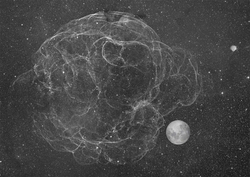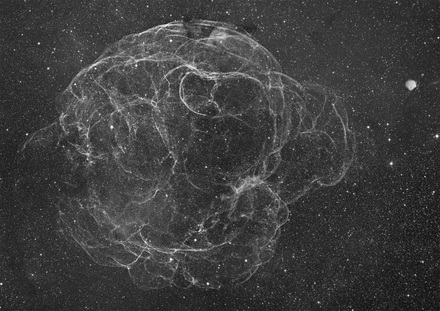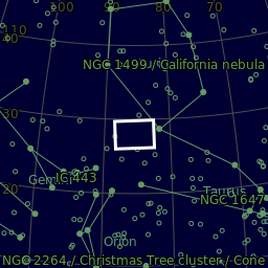Simeis 147 in mono

Here's a comparison with the full moon so that you can see how large this target is!
|
Simeis 147, also known as the Spaghetti Nebula, SNR G180.0-01.7 or Sharpless 2-240, is a supernova remnant (SNR) in the Milky Way, straddling the border between the constellations of Auriga and Taurus. Discovered in 1952 at the Crimean Astrophysical Observatory using a large 25" telescope. it is difficult to observe due to its extremely low brightness.
The nebulous area is fairly large with an almost spherical shell and filamentary structure The remnant has an apparent diameter of approx 3 degrees, an estimated distance of approximately 3000 (±350) light-years, and an age of approximately 40,000 years.It is about 1000 light years away and is roughly 15 light years in diameter. Due to its size this is a 2x2 pane mosaic in order to fit the whole nebula in the frame. Details M: Avalon Linear Fast Reverse T: Takahashi FSQ85 0.73x C: QSI683 with Astrodon 3nm Ha filter 23x900s in Ha in each pane Totalling 23 hours of exposure. |


